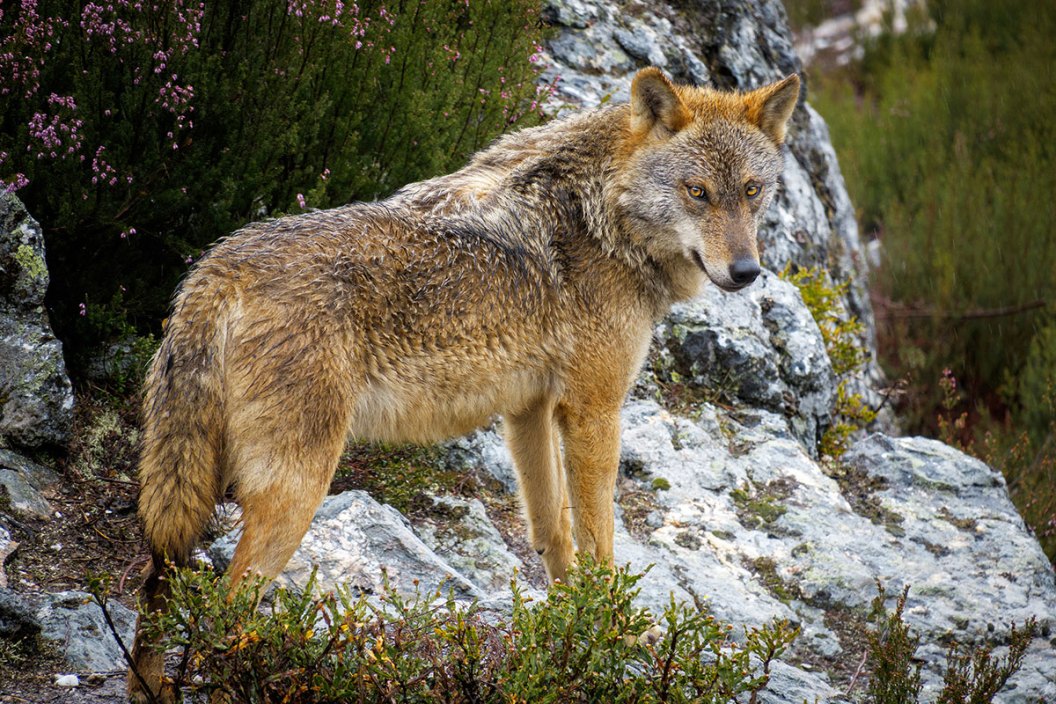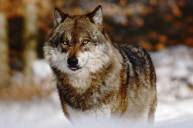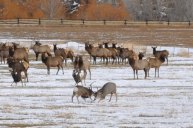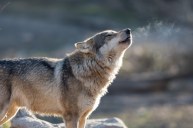Wolf hunting, currently legal in just a few states in the U.S., has long been fraught with controversy. As a highly sought-after trophy animal, wolves are at the top of the list of big game hunting as well as a hot-button issue for conservationists, hunters, and anti-hunting groups, alike.
Wolves once flourished throughout the United States, but predator-control programs in the early 1900s killed nearly all of the wolves in the Lower 48. In 1978, they became federally protected under the Endangered Species Act. At the time, fewer than 1,000 wolves lived in the U.S., all confined to northeastern Minnesota.
After receiving federal protections, the wolf population in the western Great Lakes region grew and spread through Michigan and Wisconsin, and a reintroduction program brought wolves back to Yellowstone National Park in 1995. The program has since become one of the most successful wildlife reintroduction programs in the U.S. As of January 2023, at least 108 wolves live in Yellowstone, with more than 6,000 wolves total in the Lower 48.
With such a successful population recovery, wolves were officially delisted as endangered specie in Idaho and Montana in 2011, Wisconsin in 2012, and Wyoming in 2017. Alaskan wolves have always had a healthy population and were never listed in the first place.
But with the delisting in various states came opportunities to hunt wolves again. While wolf hunts will likely always be controversial, there are times when harvesting predators can be beneficial as a management strategy, both for the predators themselves, as well as for local elk, deer, and livestock populations that the wolves feed upon.
Overall, just a handful of states have opened up hunting seasons for wolves, so let's dig into the nitty-gritty details of wolf hunting regulations and methods of take.
Where and When is Wolf Hunting Allowed?
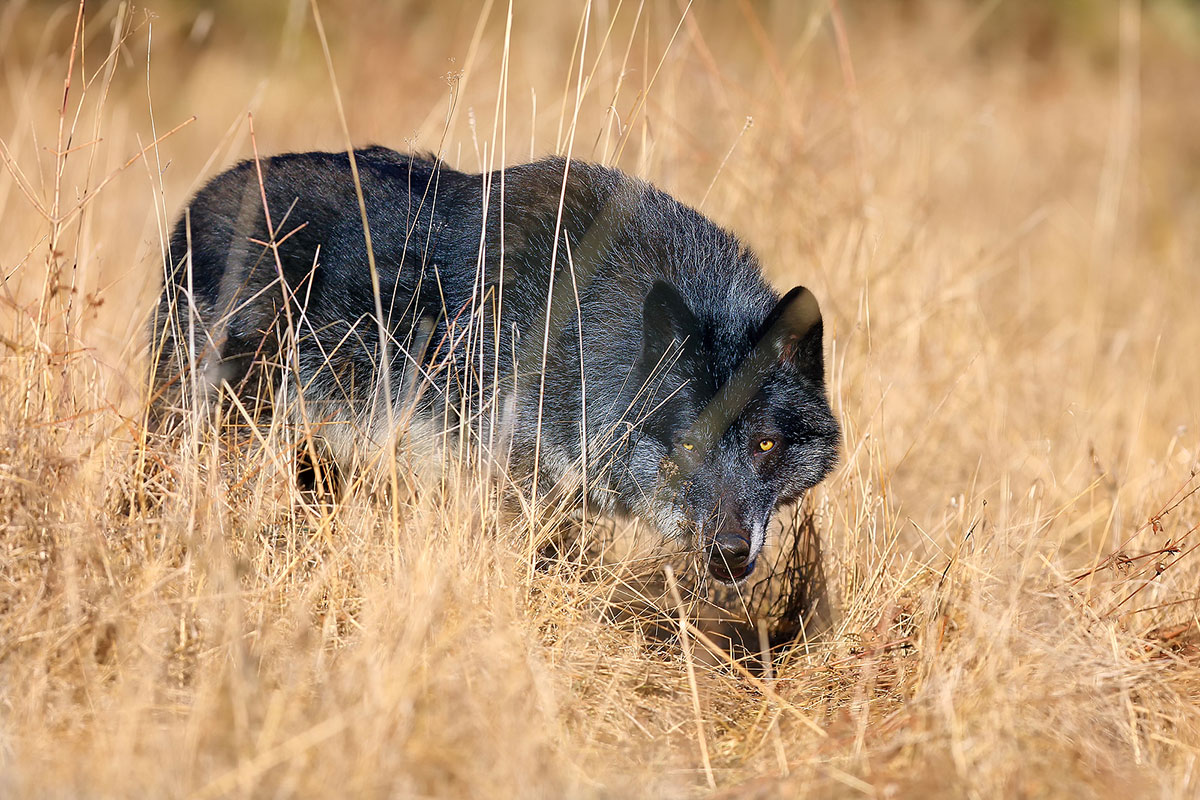
Out of five total wolf hunting states, there are four that currently allow it: Alaska, Idaho, Montana, and Wyoming. Wolves can no longer be hunted in Wisconsin, as they were relisted under the Endangered Species Act in February 2022, after the hunting and trapping season killed 218 wolves, which represented 83% more than the state's goal.
What time of year can you hunt wolves? It depends both on the state's regulations and on the management unit within the state where your hunt is taking place.
In Alaska, wolf season generally stretches from August 1 to April 30, though different game-management units may have different dates.
Idaho allows wolf hunting year-round on private land. Public land is more restricted. Depending on the game-management unit, the season can span from August 1 to June 30, or be earlier and shorter, from April 1 to November 14. Trapping also has a more restricted season on both public and private land.
Montana's wolf-hunting season is from September 15 to March 15 with an archery-only season from September 3 to September 14. Trapping season runs from the first Monday after Thanksgiving to March 15.
Wyoming classifies wolves as trophy-game animals in many game-management units, and their harvest is regulated from October 15 to the last day of February the subsequent year. Outside of the trophy-game/animal-management classification, wolves are designated as "predatory animals" and can be taken without a license at any time.
Always be sure to check the current regulations of the state you intend to hunt. Season-setting can vary year to year depending on the current wolf population.
Wolf-Hunting Methods
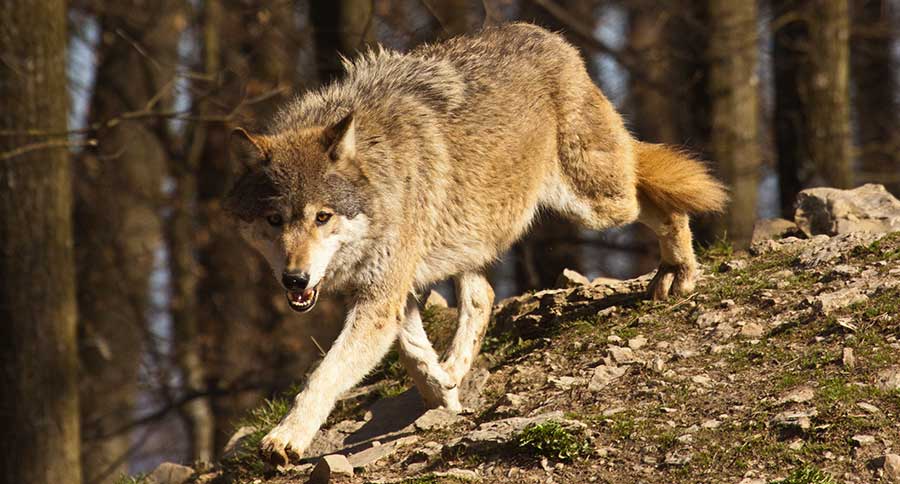
Below are the main methods that are used to hunt wolves in the U.S. Not every method is available in all four states, so make sure you know the regulations.
1. Blind and Bait
A box or pop-up blind over bait can be an effective wolf-hunting strategy. Bait stations are sometimes put out to 200 yards because of the unwillingness of wolves to come in. Baiting isn't allowed in every state and is sometimes confined to private land, so double-check regulations before using this method.
2. Wolf Kill Sites
Another effective strategy is to hunt over a wolf kill site. Wolves potentially return to the areas where they've previously downed their own prey frequently, so their appearance is somewhat predictable. Locate the sites where an animal carcass has been likely killed by a wolf, then set up downwind of them. Use a blind or some other method of concealment and wait.
3. Calling
Local laws of the hunting area will determine if you can use electronic calls or not. If permitted, take note of the local fauna expected to be in the area and mimic those animals with either locator or distress calls. Predator calls such as coyote distress or challenge howls can bring wolves running. Cow and bull elk vocalizations may also bring them in.
An effective calling method is to locate a wolf pack and call downwind of them. For best results, use a ground blind as a calling station. Give yourself enough sight distance if you can. Wolves can move fast and be on top of you before you know it, so it's best to take your shot at around 100 yards to avoid any unpleasant surprises.
Wolf Hunting Regulations By State
Alaska Wolf Hunting
Wolves are plentiful throughout much of Alaska, with the highest population in southeast Alaska where Sitka black-tailed deer are a major food source for the predators.
Alaska has subsistence and general season hunts statewide. Subsistence hunts are conducted by many cultural groups and rural residents year-round in nearly all of Alaska. The state classifies wolves as both big game and furbearers and so allows both hunting and trapping.
Exact dates and bag limits of wolves differ depending on the game-management unit, but on average the season runs from August 10 to August 30, with limits of five to 10 wolves. Be sure to check out a unit's specific regulations before planning your hunt.
Wolf tags in Alaska are inexpensive even for non-resident hunters, though the latter will need a locking tag, which a non-resident can pick one up for $60.
Idaho Wolf Hunting
In 2020, The Idaho wolf population was estimated to be 1,337 wolves, and the Idaho Fish and Game Commission has a long-term goal to reduce this. The state's hunting regulations reflect that, with no bag or season limits and year-round wolf hunting on private land. Public land units offer seasons anywhere from six to 11 months in length.
Idaho has opportunities for trappers and wolf hunters alike. There are no bag or season limits on wolves, though no one can take more wolves than the number of legal tags they possess. Hunters can also use unfulfilled nonresident deer or elk tags to take a gray wolf during the open season.
Trappers need a trapping license and a Wolf Trapper Education course validation.
Baiting is legal on private lands.
Montana Wolf Hunting
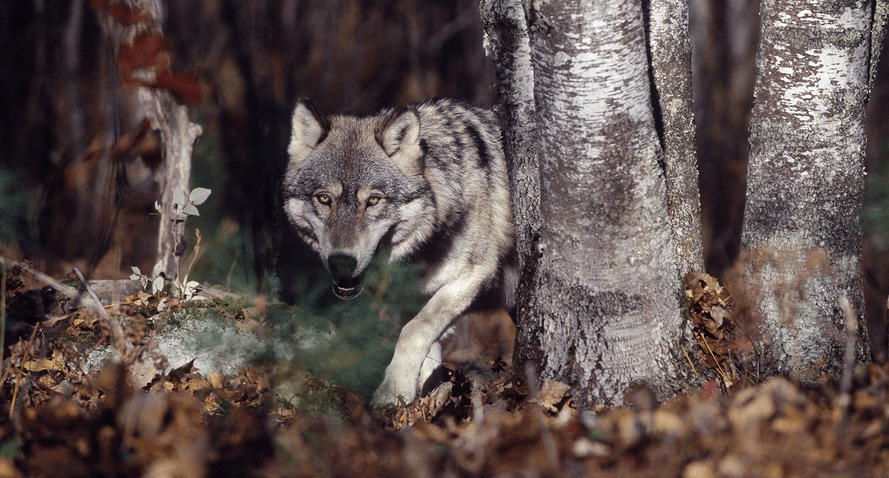
There are currently about 1,100 wolves in Montana, mostly located in the northwest of the state.
Like Idaho, hunting and trapping wolves in Big Sky Country is legal. Montana has three designated seasons: archery season (September 2 to 14), general season (September 15 to March 15), and trapping season (first Monday after Thanksgiving to March 15). Different game-management units have different harvest quotas, however, and once a quota is reached, hunting and trapping seasons are shut down.
Hunters are allowed to harvest a maximum of 20 wolves, with no more than 10 taken by hunting and no more than 10 taken by trapping. Separate licenses are needed for each wolf being hunted.
Baiting is legal in Montana as well, though restrictions apply within Lynx Protection Zones. Hunting at night on private lands is also legal, though it is illegal on public lands.
Wyoming Wolf Hunting
Wyoming has lengthy gray wolf seasons with "predatory animal" and "trophy game animal" designations. The trophy-game/animal-management area is a group of specific wolf hunt units (1-14), and at least 163 wolves reside in Wyoming's area. Season dates run from October 15 to the last day of February, and there is a mortality limit anywhere from one to eight wolves, depending on the unit. Once the mortality limit is reached, the hunting season closes. Regular licenses and tags apply.
Gray wolves are designated as predatory animals and can be taken without a license at any time, but wolves killed under predatory animal regulations must be reported.
For non-resident hunters who wish to hunt in designated wilderness areas, you will have to go through an outfitter as a licensed guide is required.
NEXT: FEMALE TRAPPER FEARLESSLY RELEASES LARGE WOLF CAUGHT ON HER
